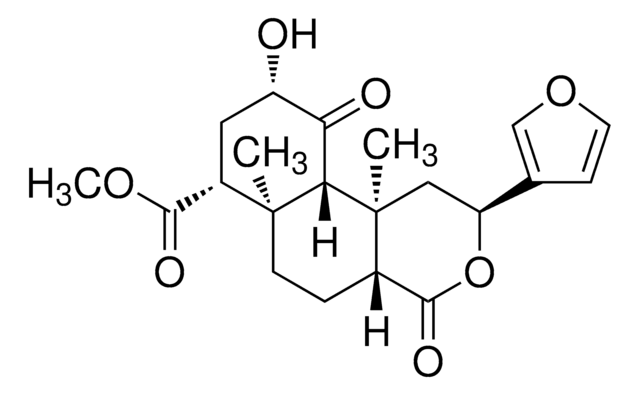489479
LSD1 Inhibitor IV, RN-1, 2HCl
LSD1 Inhibitor IV, RN-1, HCl, is a cell-permeable potent, irreversible inhibitor of lysine specific demethylase 1 (LSD1; IC₅₀ = 70 nM in a HRP-coupled assay using H3K4Me2 peptide substrate).
Sinónimos:
LSD1 Inhibitor IV, RN-1, 2HCl, LSD Inhibitor IV, Histone Lysine Demethylase Inhibitor VI, MOA Inhibitor III, 2-(1R,2S)-2-(4-(Benzyloxy)phenyl)cyclopropylamino)-1-(4-methylpiperazin-1-yl)ethanone, HCl, BHC110 Inhibitor IV, KDM1 Inhibitor IV, LSD Inhibitor IV, KDM1 Inhibitor IV, Histone Lysine Demethylase Inhibitor VI, MOA Inhibitor III, 2-(1R,2S)-2-(4-(Benzyloxy)phenyl)cyclopropylamino)-1-(4-methylpiperazin-1-yl)ethanone, HCl, BHC110 Inhibitor IV
About This Item
Productos recomendados
Quality Level
assay
≥97% (HPLC)
form
solid
manufacturer/tradename
Calbiochem®
storage condition
OK to freeze
desiccated (hygroscopic)
protect from light
color
yellow
solubility
DMSO: 2.5 mg/mL
water: 2.5 mg/mL
shipped in
wet ice
storage temp.
−20°C
General description
Packaging
Warning
Reconstitution
Other Notes
Legal Information
Storage Class
11 - Combustible Solids
wgk_germany
WGK 2
flash_point_f
Not applicable
flash_point_c
Not applicable
Certificados de análisis (COA)
Busque Certificados de análisis (COA) introduciendo el número de lote del producto. Los números de lote se encuentran en la etiqueta del producto después de las palabras «Lot» o «Batch»
¿Ya tiene este producto?
Encuentre la documentación para los productos que ha comprado recientemente en la Biblioteca de documentos.
Nuestro equipo de científicos tiene experiencia en todas las áreas de investigación: Ciencias de la vida, Ciencia de los materiales, Síntesis química, Cromatografía, Analítica y muchas otras.
Póngase en contacto con el Servicio técnico








